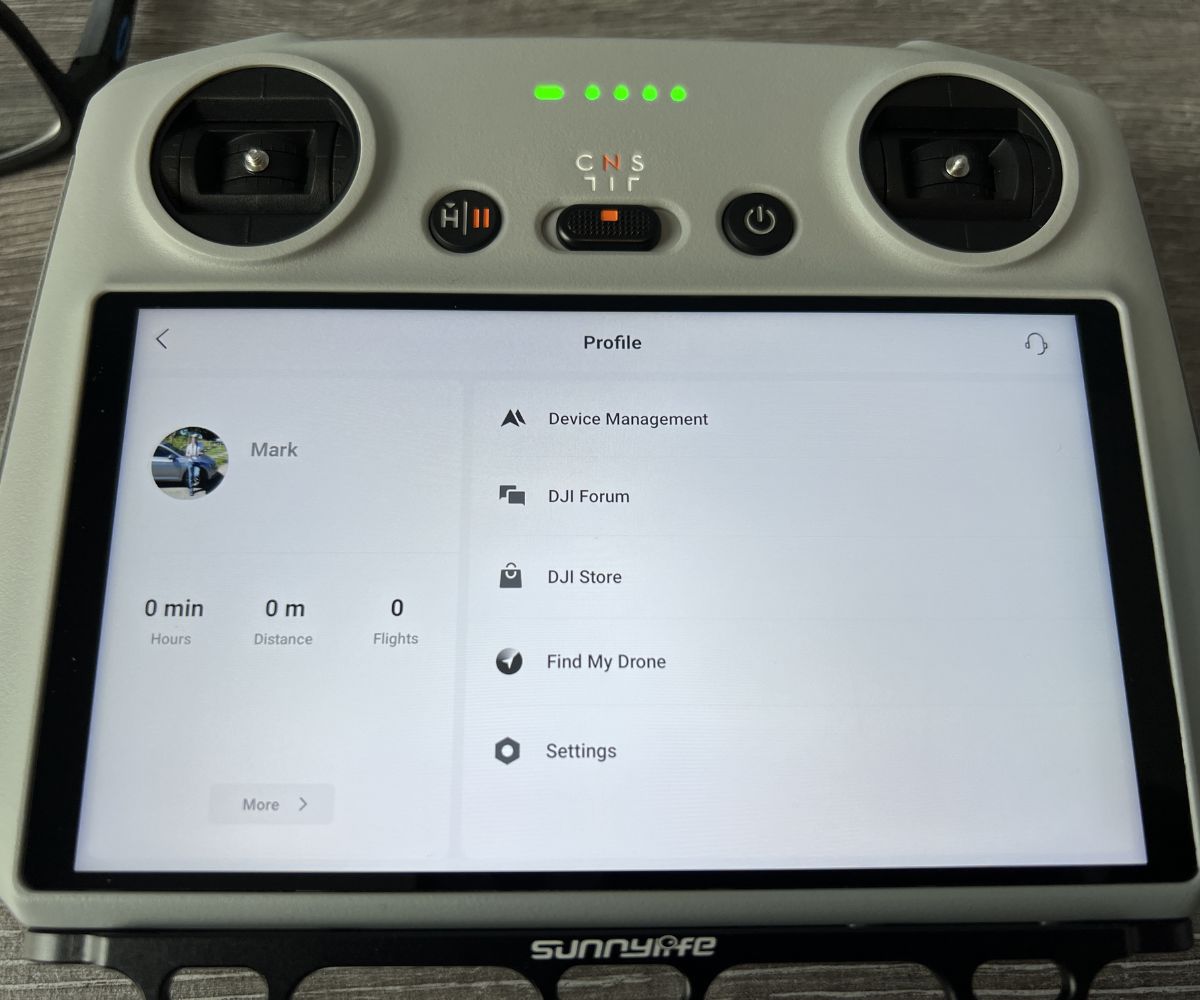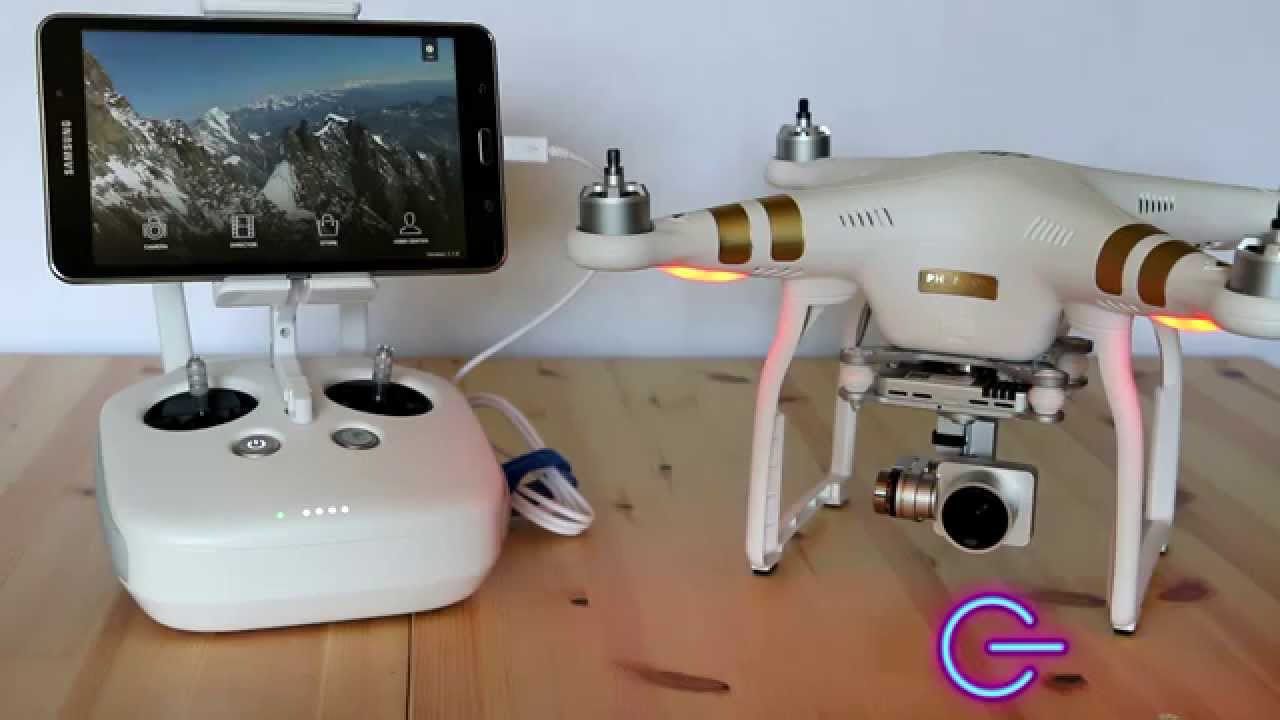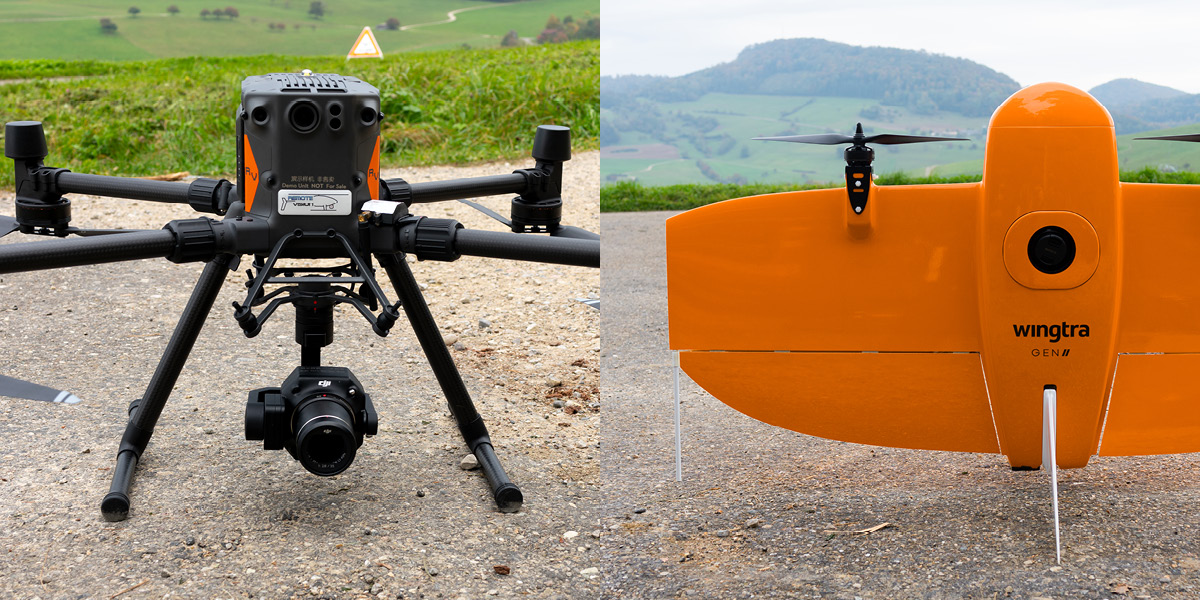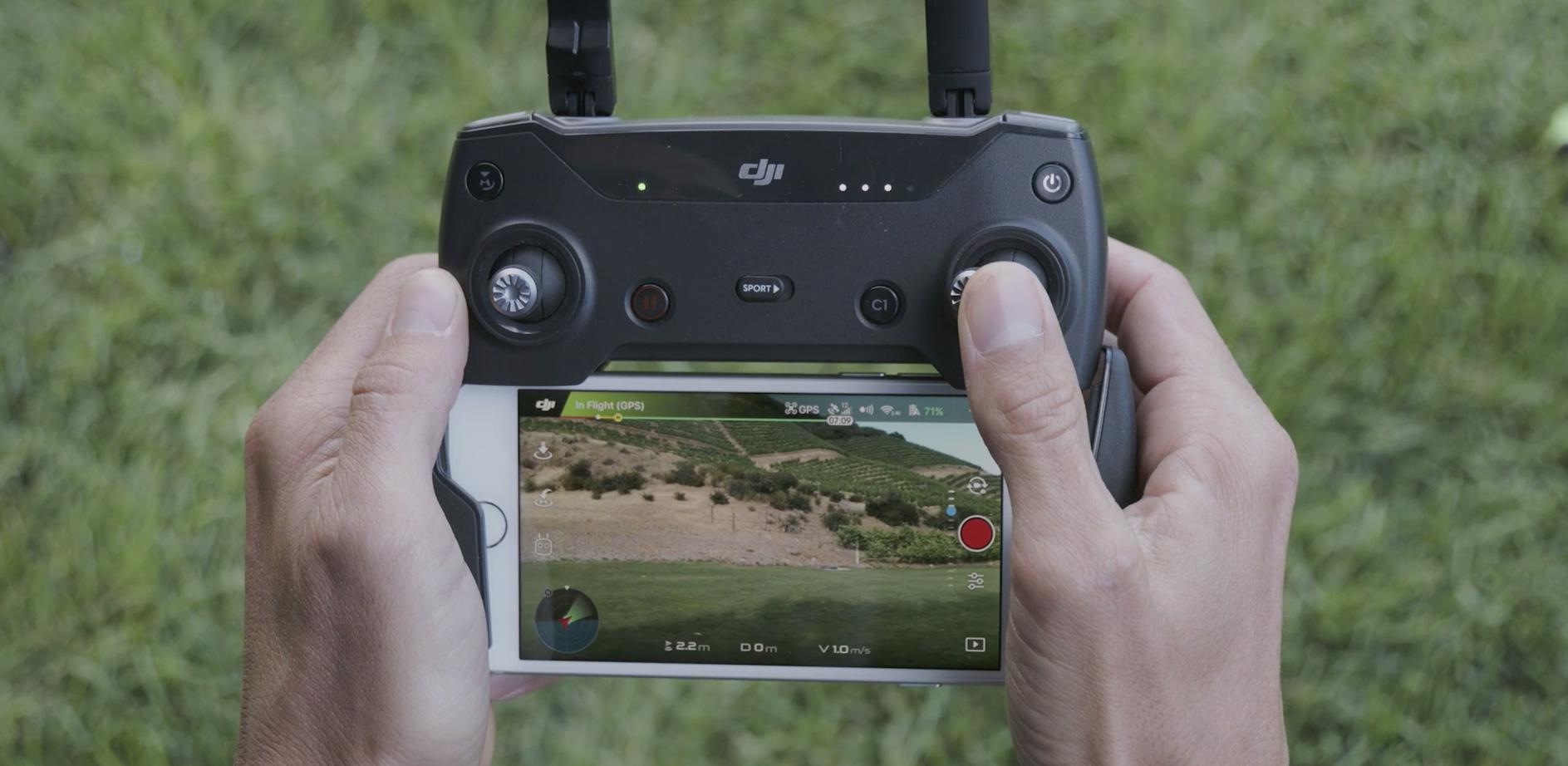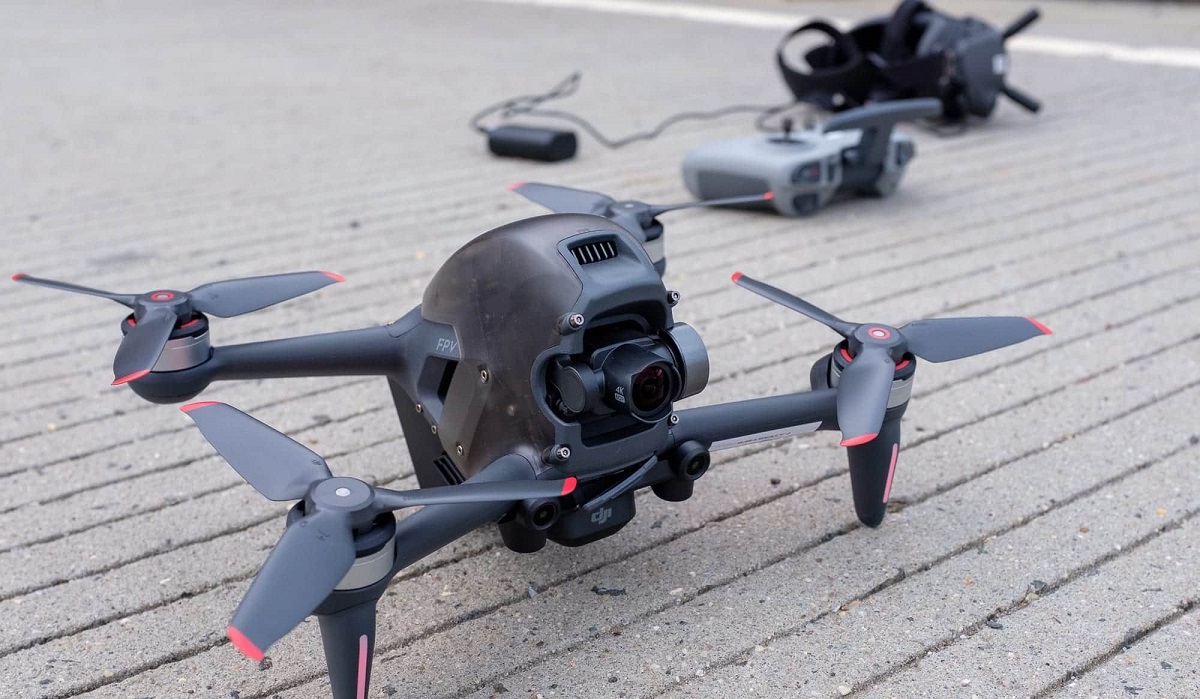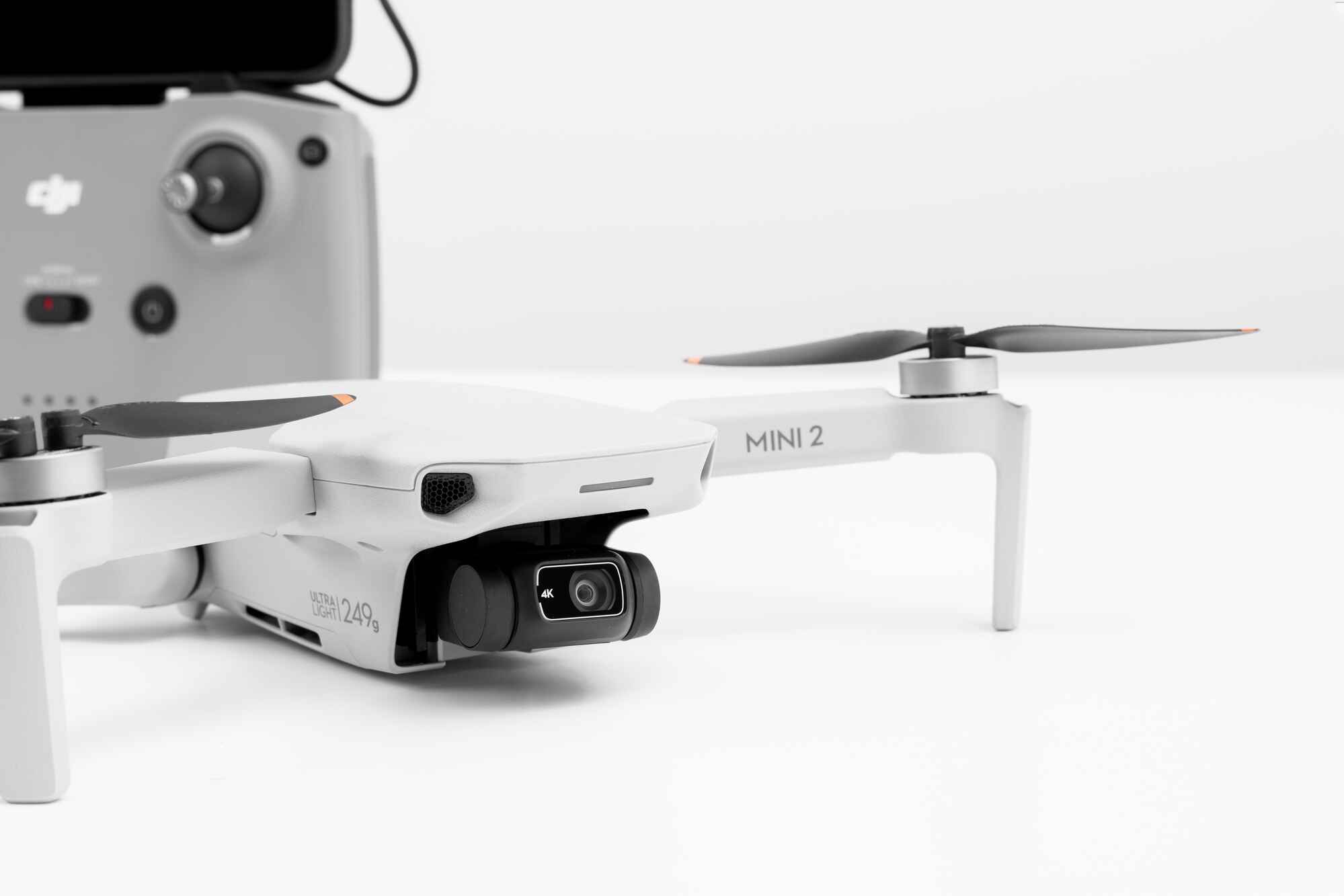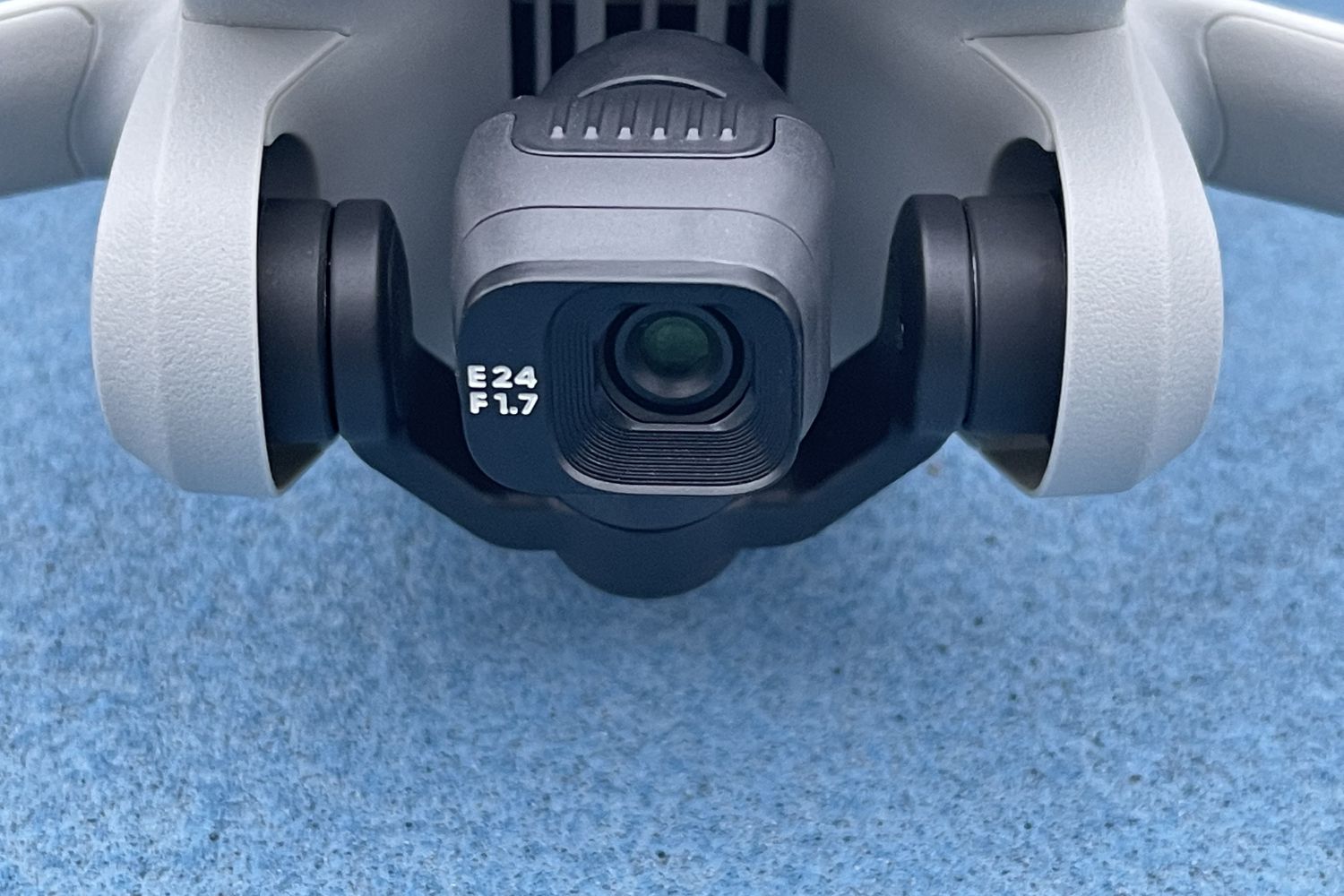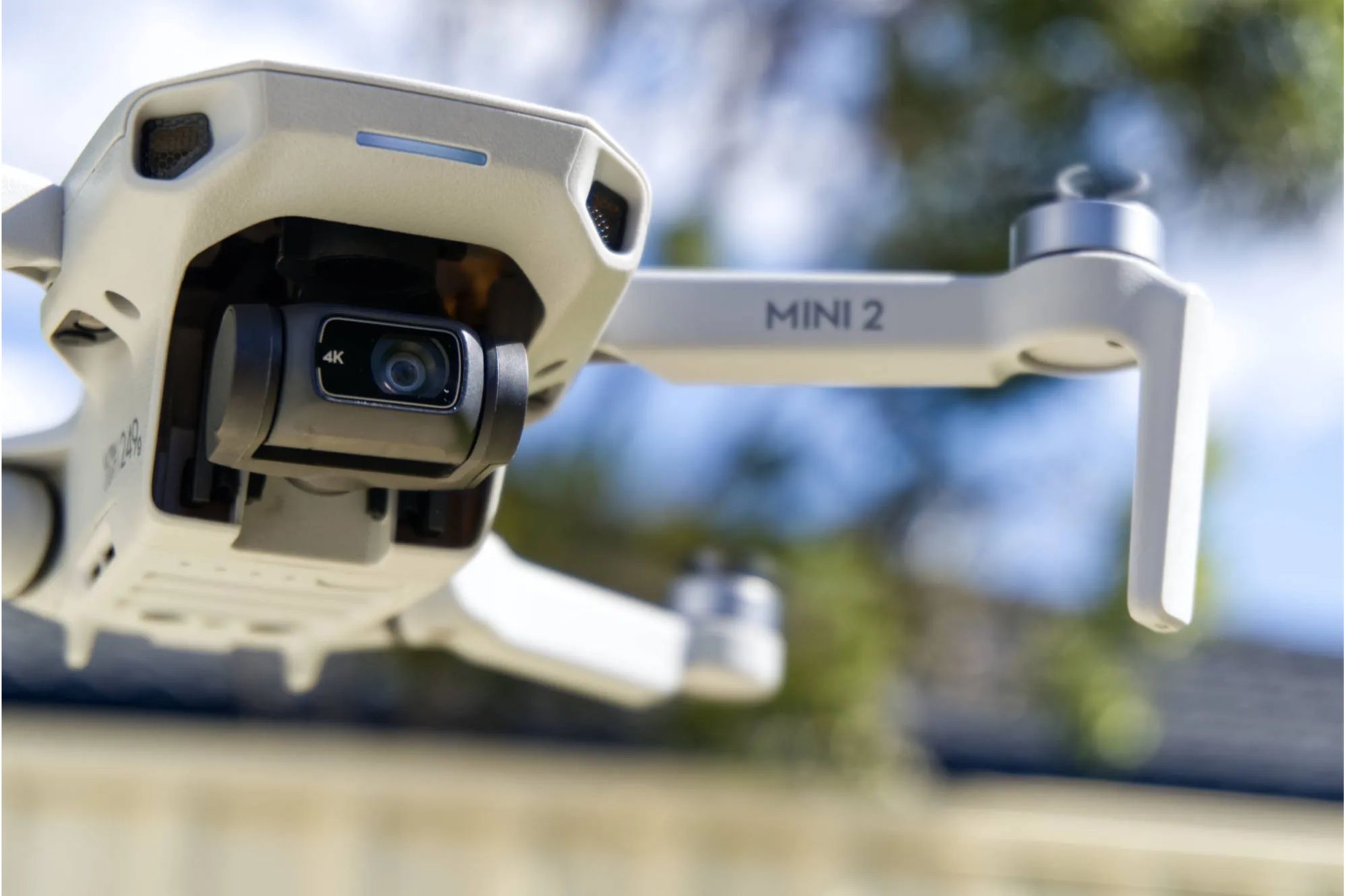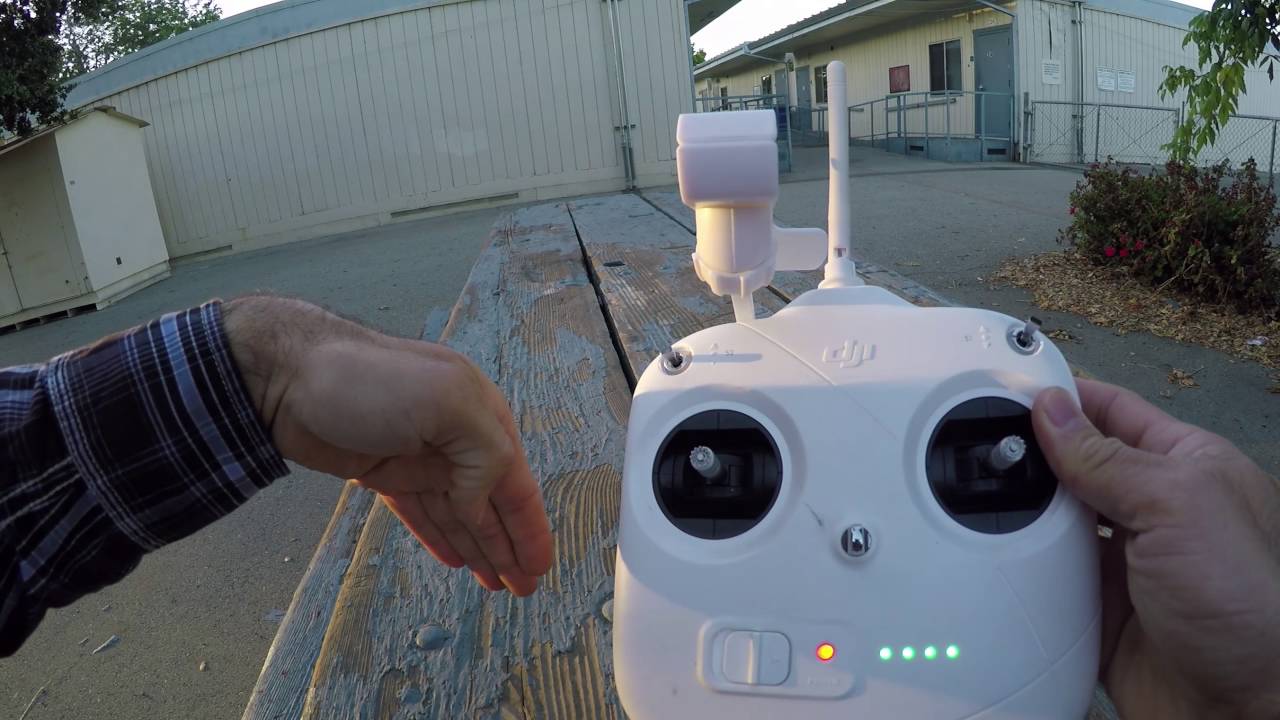Introduction
Welcome to the world of DJI flight logs! If you’re a drone enthusiast or a professional drone pilot, understanding how to view and analyze DJI flight logs can be a valuable skill. DJI flight logs provide detailed information about your drone flights, including flight telemetry data, GPS coordinates, battery usage, and more. These logs can be instrumental in troubleshooting flight issues, tracking your flight history, and improving your overall flying experience.
In this article, we’ll guide you through the process of accessing and interpreting DJI flight logs. Whether you’re a beginner or an experienced pilot, you’ll discover different methods to view your flight logs and gain insights into your drone’s performance.
But why are DJI flight logs so important? Viewing and analyzing your flight logs can help you identify and resolve issues that may have occurred during your flights. By understanding the data captured in the logs, you can gain valuable insights into your flight patterns, evaluate battery performance, assess signal strength, and more. Analyzing flight logs can also be useful for professional pilots who need to maintain detailed records of their flights for reporting or legal purposes.
Now, let’s delve into the different methods of accessing DJI flight logs and explore their significance in improving your drone flying experience.
What are DJI flight logs?
DJI flight logs are records of all the data and information collected during each flight of your DJI drone. These logs provide a detailed account of various flight parameters, including time, distance, altitude, speed, and more. They also capture vital telemetry data such as aircraft attitude, GPS coordinates, battery status, sensor readings, and flight controller inputs.
Every movement and action performed by your drone is logged in real-time, creating a comprehensive record of your flight. This includes takeoff and landing, changes in flight mode, camera settings, and even incidents or warnings that occur during the flight.
DJI flight logs are saved as files with a .DAT extension and can be downloaded from your drone’s onboard storage or accessed through the DJI app or website. These logs can be viewed and analyzed using various tools and software applications, providing valuable insights into your drone’s performance and your piloting skills.
It’s important to note that DJI flight logs are not just limited to personal recreational drones. They are equally applicable to professional and commercial drones used in industries such as aerial photography, surveying, inspections, and more. By analyzing the flight data, professional users can ensure the safety and efficiency of their operations, monitor equipment performance, and comply with regulatory requirements.
The availability and accessibility of DJI flight logs make them a valuable resource for pilots at all skill levels. Whether you’re a hobbyist looking to improve your flying skills or a professional drone operator conducting complex missions, understanding and analyzing these flight logs can greatly enhance your overall drone experience.
Importance of Viewing DJI Flight Logs
Viewing DJI flight logs is crucial for both recreational drone pilots and professionals in the industry. These logs provide valuable information that can help improve flight performance, troubleshoot issues, and enhance overall safety. Let’s explore the importance of viewing DJI flight logs in more detail:
1. Flight Performance Analysis: By analyzing DJI flight logs, you can gain insights into your flight performance and identify areas for improvement. You can review flight metrics such as altitude, speed, and distance to evaluate your flying skills and make adjustments accordingly. This analysis can help you refine your piloting techniques, achieve smoother flights, and even increase your drone’s flight time by optimizing battery usage.
2. Troubleshooting: DJI flight logs are invaluable when it comes to troubleshooting any issues that may arise during a flight. If you experience a mid-air incident or encounter abnormal behavior from your drone, reviewing the flight logs can provide crucial information. You can examine sensor readings, flight controller inputs, and other flight parameters to pinpoint the cause of the problem. This information can then be used to take appropriate steps, such as recalibrating sensors or contacting DJI support if necessary.
3. Battery Evaluation: The flight logs include battery data, such as consumption and voltage, which can help you assess the status and performance of your drone’s battery. By analyzing this information, you can determine if your battery is operating optimally or if it requires maintenance or replacement. This evaluation is particularly important for professional drone operators who rely heavily on battery performance during lengthy and critical missions.
4. Compliance and Reporting: For professional drone pilots operating in regulated industries, keeping detailed flight records is often a requirement. DJI flight logs provide all the necessary information for compliance and reporting purposes. You can easily access flight statistics, flight routes, and other relevant data to meet legal and regulatory obligations.
5. Safety Awareness: By viewing DJI flight logs, you can enhance your safety awareness and identify potential risks or patterns of behavior that may compromise flight safety. You can review flight altitude, speed, and other flight parameters to ensure you’re operating within safe limits. This analysis can also help you avoid potential hazards, such as flying in restricted areas or near other aircraft.
With their ability to provide detailed flight information, DJI flight logs are an essential tool for every drone enthusiast and professional pilot. They allow for thorough analysis, troubleshooting, performance evaluation, and compliance with regulations. By utilizing and understanding these flight logs, you can take your drone piloting skills and safety to new heights.
How to Access DJI Flight Logs
Accessing DJI flight logs can be done through various methods, giving you flexibility and convenience. Here are three common ways to access your DJI flight logs:
Method 1: Using the DJI GO App: The DJI GO app is a user-friendly mobile application that allows you to control and access your drone’s features. To access your flight logs using the app:
- Connect your mobile device to your drone’s remote controller.
- Launch the DJI GO app and go to the flight records section.
- Select the specific flight you want to view from the list of recorded flights.
- The app will display detailed information about the flight, including telemetry data, flight path, and any incidents or warnings encountered.
Method 2: Using the DJI Website: DJI provides a website where you can access and manage your flight logs. To access your flight logs through the DJI website:
- Visit DJI’s official website and log in to your DJI account.
- Navigate to the flight logs section, usually located in the account dashboard or a designated flight log page.
- Select the desired flight log from the list.
- You can now view detailed flight information, including flight parameters, GPS coordinates, battery usage, and more, in a user-friendly interface.
Method 3: Using Third-Party Apps: There are also third-party applications and software available that provide enhanced features for accessing and analyzing DJI flight logs. These apps may offer additional insights, advanced analytics, or even compatibility with other drone brands. Some popular third-party apps include Litchi, HealthyDrones, and AirData.
Regardless of the method you choose, it’s important to ensure that you follow proper security practices when accessing your DJI flight logs. This includes using trusted sources for software and applications, protecting your login credentials, and keeping your devices up-to-date with the latest security patches.
Now that you know how to access your DJI flight logs, you can unlock a wealth of information about your drone flights. Whether you prefer to use the DJI GO app, the DJI website, or third-party applications, accessing and reviewing your flight logs will provide valuable insights to enhance your flying experience.
Method 1: Using the DJI GO App
The DJI GO app is a comprehensive mobile application that allows you to control your DJI drone, access various flight settings, and view your flight logs. Follow these steps to access your DJI flight logs using the DJI GO app:
- Ensure you have the DJI GO app installed on your mobile device. The app is available for both iOS and Android devices and can be downloaded from the respective app stores.
- Connect your mobile device to your drone’s remote controller using the appropriate cable or wireless connection.
- Power on your drone and the remote controller. Make sure they are successfully connected.
- Launch the DJI GO app on your mobile device.
- If prompted, log in to your DJI account or create a new account.
- Once you’re in the app, navigate to the flight records section. This can usually be accessed through a dedicated tab or menu option.
- You will see a list of your recorded flights, sorted by date and time. Select the specific flight you want to view from the list.
- The app will display detailed information about the selected flight. This includes telemetry data such as altitude, speed, distance, flight duration, and even a graphical representation of the flight path.
- Scroll through the information to review additional details, warnings, or incidents that occurred during the flight.
- Take advantage of the app’s features to analyze the flight data, compare flights, and gain insights into your piloting skills and drone performance.
The DJI GO app provides a user-friendly interface that allows you to easily navigate and explore your flight logs. It offers a wealth of information to help you understand your flying patterns, identify areas for improvement, and ensure the safety and efficiency of your drone flights.
Remember to regularly sync your flight logs with the DJI cloud services or export them to other devices or platforms for backup and further analysis. This will ensure that you have a comprehensive record of your flight history.
Using the DJI GO app to access your flight logs is a convenient and intuitive method that puts all your flight data at your fingertips. Whether you’re a recreational flyer or a professional drone pilot, the DJI GO app provides valuable insights to enhance your flying experience and take your flights to new heights.
Method 2: Using the DJI Website
Accessing your DJI flight logs through the DJI website is a straightforward way to view and manage your flight data. Here are the steps to access your DJI flight logs using the DJI website:
- Open your preferred web browser and visit the official DJI website.
- Log in to your DJI account using your email and password. If you don’t have an account, create one by following the registration process.
- Once logged in, navigate to your account dashboard or locate the flight logs section. It may be listed under a specific menu or account settings.
- In the flight logs section, you will find a list of your recorded flights, organized by date and time.
- Select the flight log you want to view by clicking on it. The website will display the detailed information for that specific flight.
- Explore the flight log details, which can include telemetry data, GPS coordinates, battery usage, and more.
- Utilize the interactive elements of the website interface, such as graphs or charts, to gain a better understanding of your flight parameters and performance.
- Take advantage of any additional features or options provided on the DJI website, such as the ability to export or analyze your flight data.
- Repeat these steps to access and review other flight logs stored in your DJI account.
The DJI website provides a convenient platform to access your flight logs from any device with internet access. It offers a user-friendly interface that allows you to easily navigate through your flight records and extract valuable insights about your drone flights.
Make sure to regularly sync your flight logs with the DJI cloud services or download them to your local device for backup and further analysis. This ensures that you have access to your flight data even if you switch devices or encounter any issues with cloud synchronization.
Using the DJI website to access your flight logs provides a centralized and accessible location for managing your flight data. Whether you’re a recreational flyer or a professional drone operator, the DJI website offers a comprehensive platform to analyze your flight logs and gain insights to improve your flying skills and overall drone experience.
Method 3: Using Third-Party Apps
In addition to the DJI GO app and the DJI website, there are several third-party applications available that provide advanced features for accessing and analyzing DJI flight logs. These apps offer additional functionalities and tools that can enhance your experience with flight data analysis. Here is how to access your DJI flight logs using third-party apps:
- Research and select a trusted third-party app that is compatible with your DJI drone model. Some popular options include Litchi, HealthyDrones, and AirData.
- Download and install the chosen app from the respective app store or the developer’s website. Make sure to follow the installation instructions provided.
- Launch the app on your mobile device or computer, and follow any initial setup or registration process.
- Connect your DJI drone and mobile device or computer according to the instructions provided by the third-party app.
- Once connected, navigate to the flight logs section within the app. This may be labeled as “Flight Records,” “Drone Logs,” or something similar.
- Select the specific flight you want to view from the list of recorded flights.
- The third-party app will display detailed flight information, telemetry data, and other relevant parameters in a user-friendly interface.
- Explore the additional features and functionalities offered by the app, such as advanced flight data analysis, comparisons between flights, or even integration with other drone brands.
- Take advantage of any exporting or sharing options available in the third-party app to save or transfer your flight logs for backup or further analysis.
- Repeat these steps whenever you want to access and analyze your DJI flight logs using the chosen third-party app.
Using third-party apps to access your DJI flight logs can provide you with increased functionality and customization options. These apps often offer advanced data visualizations, detailed analytics, and compatibility with multiple drone models, making them ideal for professional drone operators or enthusiasts looking for more in-depth flight data analysis.
Make sure to choose reputable third-party apps and keep them up-to-date to ensure compatibility with the latest DJI firmware and features. Additionally, be mindful of any privacy or data usage policies of the third-party apps, as they may handle your flight data differently than the official DJI apps.
By leveraging the capabilities of third-party apps, you can unlock additional insights and enhance your flight data analysis beyond what is offered by the DJI GO app and DJI website.
Understanding the Information in DJI Flight Logs
DJI flight logs contain a wealth of data and information about your drone’s flights. To fully utilize these logs, it’s essential to understand the different types of information they provide. Here are the key components you’ll find in DJI flight logs:
1. Telemetry Data: DJI flight logs include telemetry data that gives insights into various flight parameters. This data includes altitude, speed, distance traveled, GPS coordinates, flight duration, battery levels, and more. Understanding telemetry data allows you to assess the performance of your drone and analyze flight patterns.
2. Flight Path: DJI flight logs provide a graphical representation of the flight path. The flight path shows the trajectory and route taken during the flight. Examining the flight path can help you visualize your drone’s movements, evaluate flight efficiency, and identify any irregularities or areas for improvement.
3. Battery Usage: Flight logs detail battery usage, including battery voltage, power consumption, and remaining capacity. By understanding battery data, you can monitor the health of your drone’s battery, ensure efficient power management, and plan your flights accordingly.
4. Sensor Readings: DJI flight logs capture the readings from various sensors on your drone. These sensors include gyroscopes, accelerometers, magnetometers, and more. The sensor readings can provide valuable information to identify any anomalies or issues with the drone’s attitude, stability, and positioning.
5. Warnings and Incidents: Flight logs also record any warnings or incidents that occur during the flight. This includes notifications related to low battery, poor GPS signal, sensor malfunctions, or any other abnormal occurrences. Reviewing these warnings and incidents can help you diagnose issues and ensure the safety of future flights.
Interpreting the information in DJI flight logs requires familiarity with the various parameters and how they relate to your drone’s performance. Take the time to study the flight logs, compare different flights to look for patterns, and identify any areas where you can enhance your flying skills or optimize your drone’s performance.
Additionally, it’s worth noting that DJI flight logs may contain technical terms and acronyms that may be unfamiliar to new drone pilots. If you come across any terms you don’t understand, refer to the DJI user manual or online resources to learn more about their meanings and implications.
By understanding the information within DJI flight logs, you can gain valuable insights into your drone’s performance, flight patterns, and overall flight experience. This knowledge will enable you to make data-driven decisions, enhance your flying skills, troubleshoot issues, and ensure safe and efficient flights.
Analyzing Flight Data for Troubleshooting
Analyzing flight data from DJI flight logs is a critical step in troubleshooting any issues or incidents that may have occurred during your drone flights. By carefully examining the flight data, you can identify potential problems, diagnose the root causes, and take appropriate steps to resolve them. Here’s how to analyze flight data for troubleshooting:
1. Review Telemetry Data: Start by reviewing the telemetry data recorded in the flight logs. Look for any abnormalities in altitude, speed, or battery levels. Uneven or sudden changes in these parameters may indicate flight instability or issues with the drone’s systems.
2. Evaluate Sensor Readings: Analyze the sensor readings captured in the flight logs. Pay attention to any sensor anomalies or deviations from the expected values. Sensor malfunctions can lead to flight instability, erratic behavior, or inaccurate positioning.
3. Check Warnings and Incidents: Examine the warnings and incidents logged during the flight. These notifications can provide insight into potential issues with battery health, GPS signal, or other crucial aspects of the flight. Addressing these warnings can prevent future complications.
4. Compare Flights: Compare the flight logs of multiple flights to identify patterns or similarities in problematic areas. Look for recurring issues or fluctuations in performance that may indicate persistent problems with your drone or piloting technique.
5. Consult Documentation and Online Resources: If you encounter technical terms or acronyms in the flight data that you’re unfamiliar with, refer to the DJI user manual or online resources to gain a better understanding. This information can help you interpret the flight data and diagnose specific issues.
6. Seek Professional Help: If you’re unable to troubleshoot the problem on your own, consider reaching out to DJI customer support or a professional drone repair service. Provide them with the relevant flight data and explain the issue you’re facing. They can further analyze the flight logs and provide expert guidance or assistance.
Remember, flight data analysis is an iterative process. It may take multiple rounds of analysis, testing, and adjustment to effectively troubleshoot and resolve issues. Keep track of your findings and document any actions taken to address the identified problems, as this will help you refine your troubleshooting process in the future.
By analyzing flight data from DJI flight logs, you can uncover valuable insights into the performance of your drone. This data-driven approach to troubleshooting will enable you to diagnose and resolve issues efficiently, ensuring optimal flight performance and a better drone flying experience.
Tips for Interpreting DJI Flight Logs
Interpreting DJI flight logs can be a valuable skill, allowing you to gain insights into your drone’s performance and troubleshoot any issues that may arise. To help you make the most of your DJI flight logs, here are some tips for effective interpretation:
1. Familiarize Yourself with Flight Parameters: Take the time to understand the various flight parameters recorded in the logs, such as altitude, speed, distance, and battery usage. Familiarity with these parameters will enable you to interpret the data more effectively.
2. Look for Deviations and Anomalies: Pay attention to any deviations or anomalies in the flight data. Sudden changes in altitude, irregular battery consumption, or fluctuations in speed can indicate potential issues that require further investigation.
3. Compare with Previous Flights: Compare the flight logs of your current flight with previous flights to identify any patterns or trends. This can help you pinpoint any changes in performance or behavior that may require attention or adjustment.
4. Consider External Factors: Take into account external factors that may have influenced the flight, such as weather conditions or electromagnetic interference. This will help you contextualize the flight data and understand any variations in performance.
5. Utilize Graphical Representations: Many DJI flight logs provide graphical representations of flight data, such as flight paths and sensor readings over time. Use these visualizations to gain a clearer understanding of your drone’s performance and identify any potential issues.
6. Take Note of Warnings and Incidents: Pay close attention to the warnings and incidents logged in the flight logs. These notifications can alert you to critical issues or provide valuable insights into flight anomalies that occurred during the flight.
7. Consult DJI Documentation: If you encounter technical terms or abbreviations that you’re unfamiliar with, refer to the DJI documentation or online resources. This will help you decipher any terminology and make more accurate interpretations of the flight data.
8. Keep an Analytical Mindset: Approach flight data analysis with an analytical mindset. Be open to different interpretations and consider multiple factors that may contribute to the observed flight behavior.
9. Document and Track Findings: Keep a record of your interpretations and any actions taken as a result. This will help you build a knowledge base and improve your troubleshooting process over time.
10. Seek Community Support: Engage with drone communities and forums to discuss flight data analysis and interpretation. Sharing insights and experiences with fellow drone enthusiasts can broaden your understanding and provide valuable perspective.
By following these tips, you can effectively interpret DJI flight logs and harness the valuable insights they provide. This will enable you to make data-driven decisions, improve your flight performance, and troubleshoot any issues that may arise during your drone flights.
Conclusion
Understanding how to view and interpret DJI flight logs is a valuable skill for drone enthusiasts and professional pilots alike. These flight logs provide detailed information about your drone’s flights, allowing you to analyze performance, troubleshoot issues, and enhance your flying experience.
By accessing DJI flight logs through methods such as the DJI GO app, the DJI website, or third-party apps, you can review telemetry data, flight paths, battery usage, and other critical flight parameters. This information helps you evaluate your flying skills, diagnose potential problems, and make data-driven decisions to improve your drone’s performance.
When analyzing flight data, it’s important to familiarize yourself with the various parameters recorded in the logs. Look for deviations, anomalies, and patterns in the data to identify potential issues or areas for improvement. Comparing flight logs and considering external factors can provide further context for interpreting the data accurately.
Furthermore, the detailed insights obtained from DJI flight logs help enhance safety, comply with regulations, and optimize flight efficiency. Troubleshooting issues becomes easier as you gain a better understanding of your drone’s behavior through thorough analysis of flight data.
Remember to document your findings, seek support from the drone community, and consult official documentation or online resources when necessary. These steps will aid in building a knowledge base and continuously improving your flight data analysis skills.
In conclusion, DJI flight logs offer a wealth of information that can significantly contribute to your drone flying experience. By accessing and interpreting these flight logs, you can unlock valuable insights to enhance performance, troubleshoot issues, and ensure safe and efficient flights. Embrace the power of DJI flight logs and take your drone flying skills to new heights.







